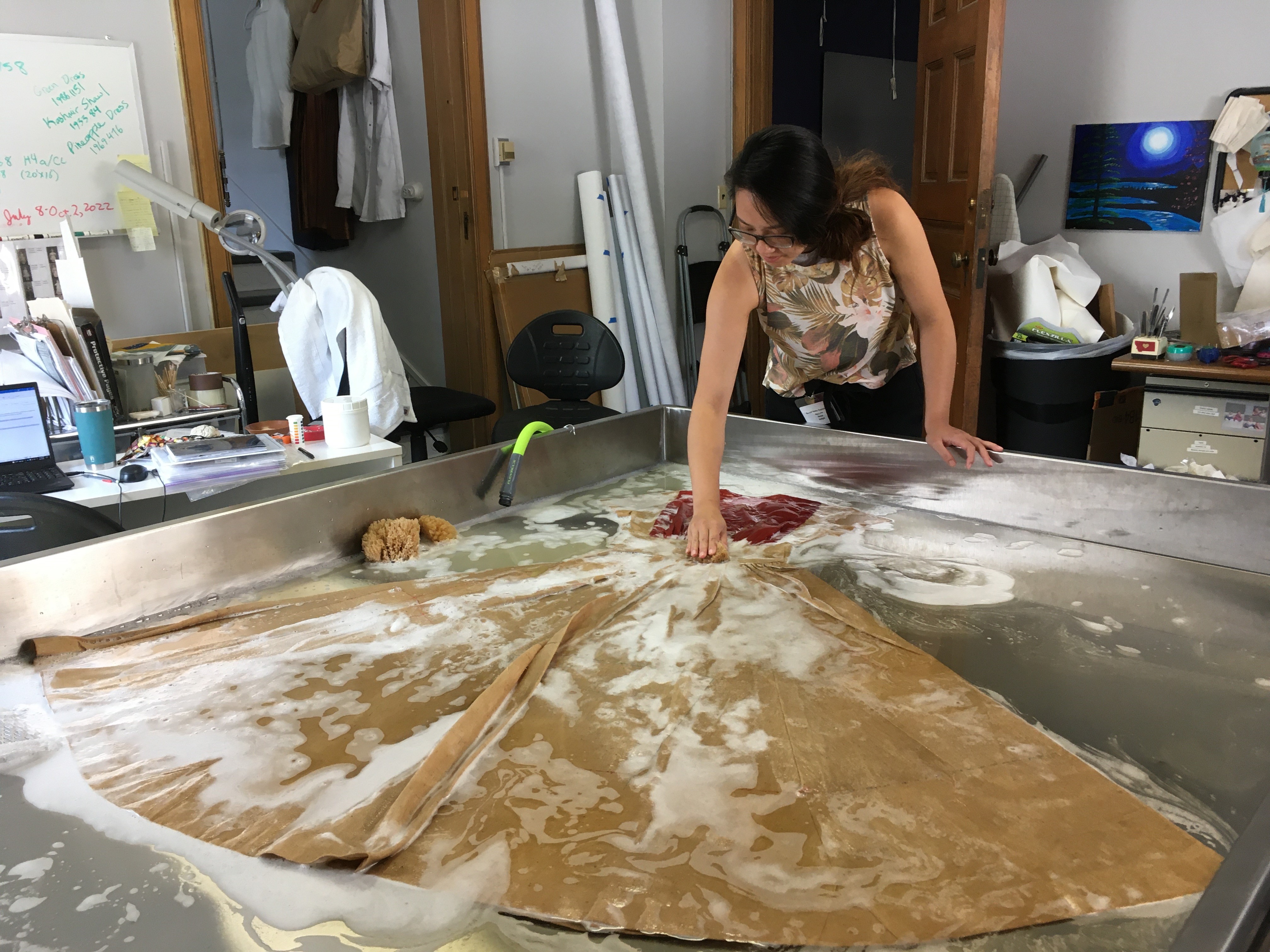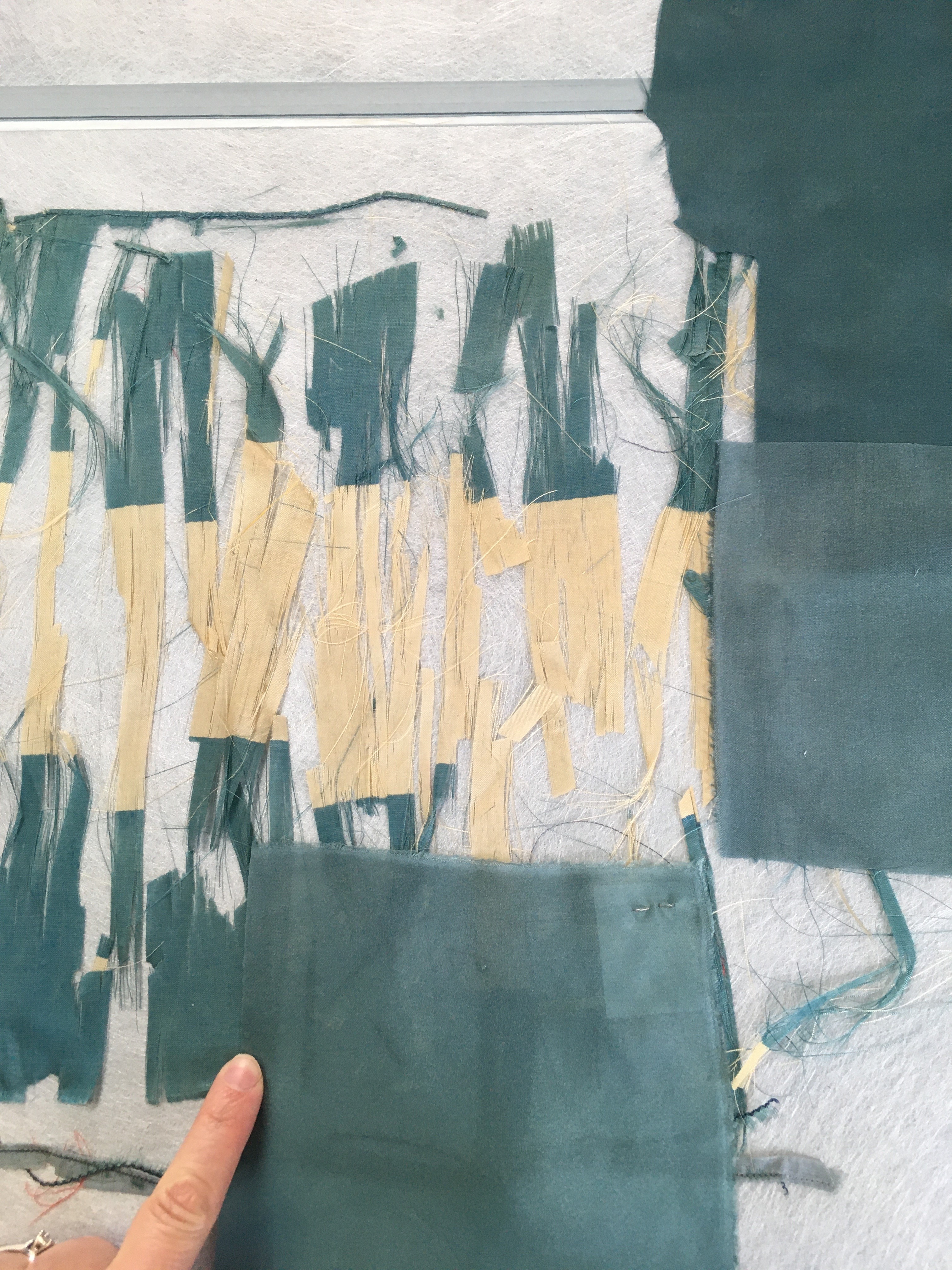- Events & Programs Home
- Calendar
- Accessibility
- Adults
-
Families & Teens
- Families & Teens Home
- 10x10 Teen Art Expo
- Art on the Rise
- Art Together: Art Making for Families with Children Ages 3–5
- Babies Sing with May Festival Minis
- Boy Scouts / Girl Scouts
- CAM Kids Day
- Family Storytime and Gallery Walk
- Family Studio: Art Making for Families with Children Ages 6–12
- Games in the Galleries
- Members-Only Baby Tours
- Public Baby Tours
- REC Reads
- Rosenthal Education Center (REC)
- Saturday Morning Art Class
- See Play Learn Kits
- Summer Camp
- Teen Fest: Zine and Comic Exchange
- RECreate
- Teachers
- Community Outreach
- Fundraisers
- Plan Your Own Event

- Events & Programs Home
- Calendar
- Accessibility
- Adults
-
Families & Teens
- Families & Teens Home
- 10x10 Teen Art Expo
- Art on the Rise
- Art Together: Art Making for Families with Children Ages 3–5
- Babies Sing with May Festival Minis
- Boy Scouts / Girl Scouts
- CAM Kids Day
- Family Storytime and Gallery Walk
- Family Studio: Art Making for Families with Children Ages 6–12
- Games in the Galleries
- Members-Only Baby Tours
- Public Baby Tours
- REC Reads
- Rosenthal Education Center (REC)
- Saturday Morning Art Class
- See Play Learn Kits
- Summer Camp
- Teen Fest: Zine and Comic Exchange
- RECreate
- Teachers
- Community Outreach
- Fundraisers
- Plan Your Own Event
Blog: CAM Uncovered
Blog: CAM Uncovered
- Home
- Plan Your Visit
- Art
-
Events & Programs
- Events & Programs Home
- Calendar
- Accessibility
- Adults
-
Families & Teens
- Families & Teens Home
- 10x10 Teen Art Expo
- Art on the Rise
- Art Together: Art Making for Families with Children Ages 3–5
- Babies Sing with May Festival Minis
- Boy Scouts / Girl Scouts
- CAM Kids Day
- Family Storytime and Gallery Walk
- Family Studio: Art Making for Families with Children Ages 6–12
- Games in the Galleries
- Members-Only Baby Tours
- Public Baby Tours
- REC Reads
- Rosenthal Education Center (REC)
- Saturday Morning Art Class
- See Play Learn Kits
- Summer Camp
- Teen Fest: Zine and Comic Exchange
- RECreate
- Teachers
- Community Outreach
- Fundraisers
- Plan Your Own Event
- Give & Join
- About
- Tickets
- Calendar
- Exhibitions
- Collections
- Blog
- Shop
Behind the Scenes in Conservation: Ready for a Closeup? Hawes’ Flag Dress
by Obie Linn, Textile Conservator
9/21/2023
textile conservation , Elizabeth Hawes , Flag Dress , before and after , CAMConservation , textiles
There are few things more satisfying than seeing some really dramatic “before and after” photos when a conservation treatment is complete! Conservation of Elizabeth Hawes’ “flag dress” or Geographic (1940) has wrapped up, and now you can flip through a whole album of “before/after” pairs showing the transformations of many of the flags that cover the dress. (See slideshow.)
Can you spot the treatments? Sometimes it’s easy. (I’m looking at you, flag of the Union of South Africa.) Sometimes it’s almost seamless. (Doesn’t the flag of Brazil look great?) Sometimes it’s a trick question because what you see is a new reproduction. (The flag of Poland is reproduced from mere fragments!)
Choosing the best treatment for an object is a big part of being a good conservator, and we are always learning and adjusting to do better for the objects in our care. The flag dress is an interesting conservation case because I used so many different techniques over such a long span of time, allowing each flag’s treatment to be adjusted based on what I’ve learned as I worked on each flag’s unique needs. Flip through the album of “before/after” pairs for a close-up look at the different treatments and ponder which worked best!

Before treatment (left) and after treatment (right) of the three flags of the Axis powers: Nazi Germany, Japan, and Italy. We know the flag of Nazi Germany ought to be there only from Elizabeth Hawes’ original sketch of the dress and the stitch holes where it was once attached. This digital reproduction helps Geographic say what Hawes intended once again with these 3 tiny flags on the wearer’s seat.
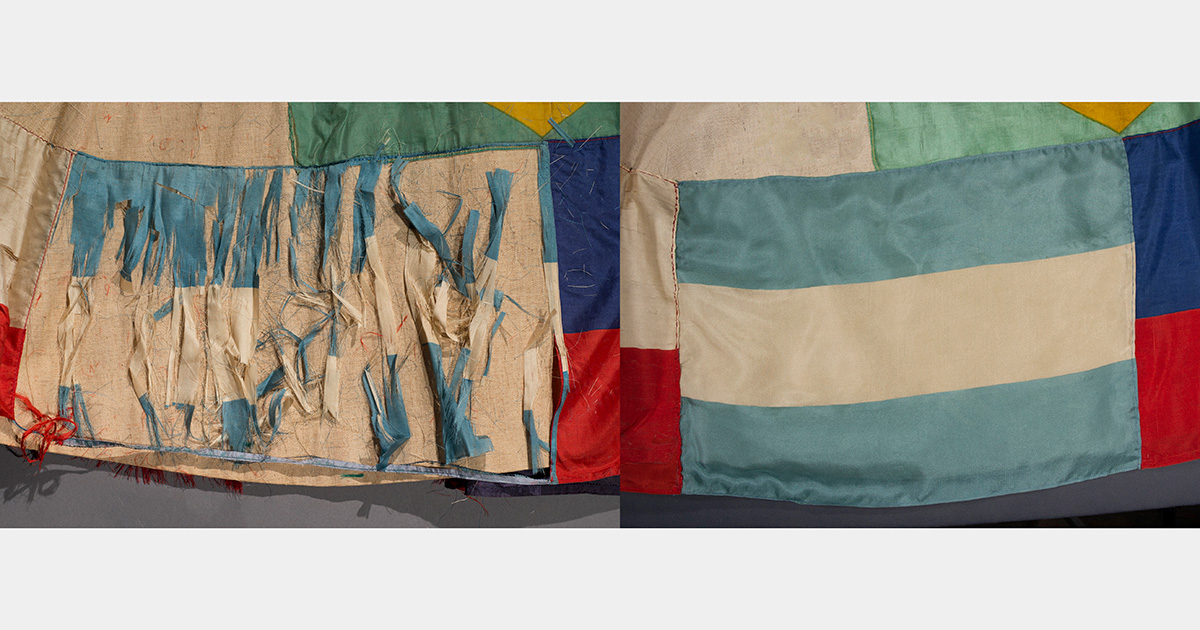
Before treatment (left) and after treatment (right) of the flag of Argentina. Treated with facsimile of dyed-to-match silk adhered together to imitate printed original.
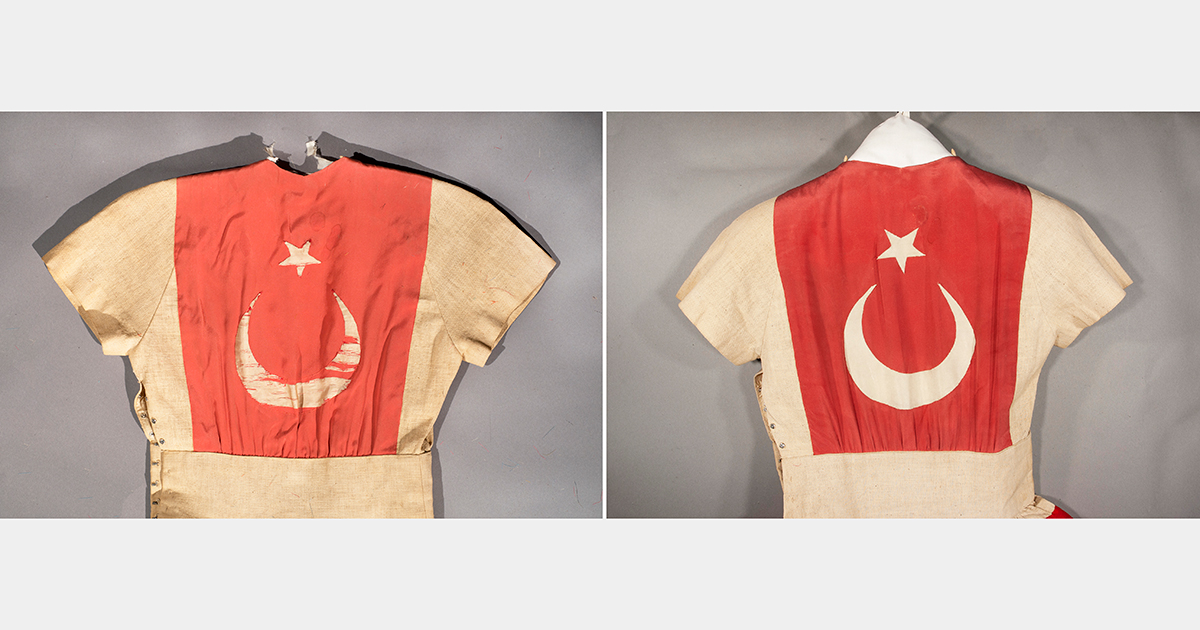
Before treatment (left) and after treatment (right) of the flag of Turkey, which is incorporated into the back bodice panel. Treated with new appliqué of dyed-to-match silk prepared with “conservation-safe interfacing” of adhesive-impregnated silk crepeline. New appliqué stitched over the original to preserve what remains of the original.
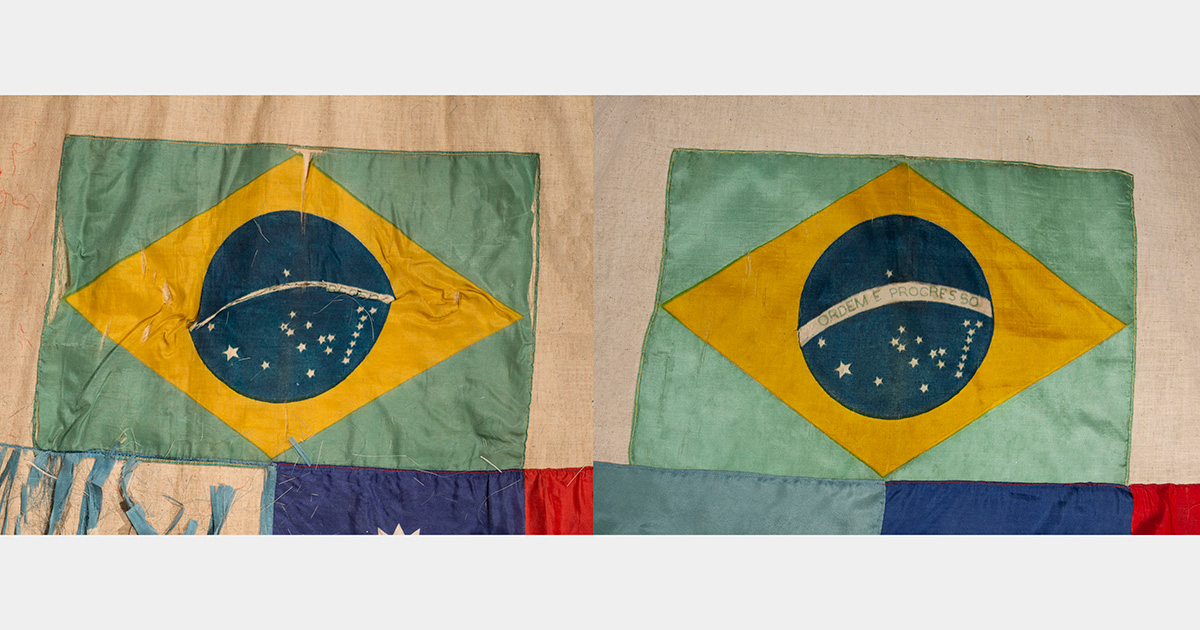
Before treatment (left) and after treatment (right) of the flag of Brazil. Treated with dyed-to-match silk patches adhered to the reverse plus digitally-printed silk to recreate the painted banner.
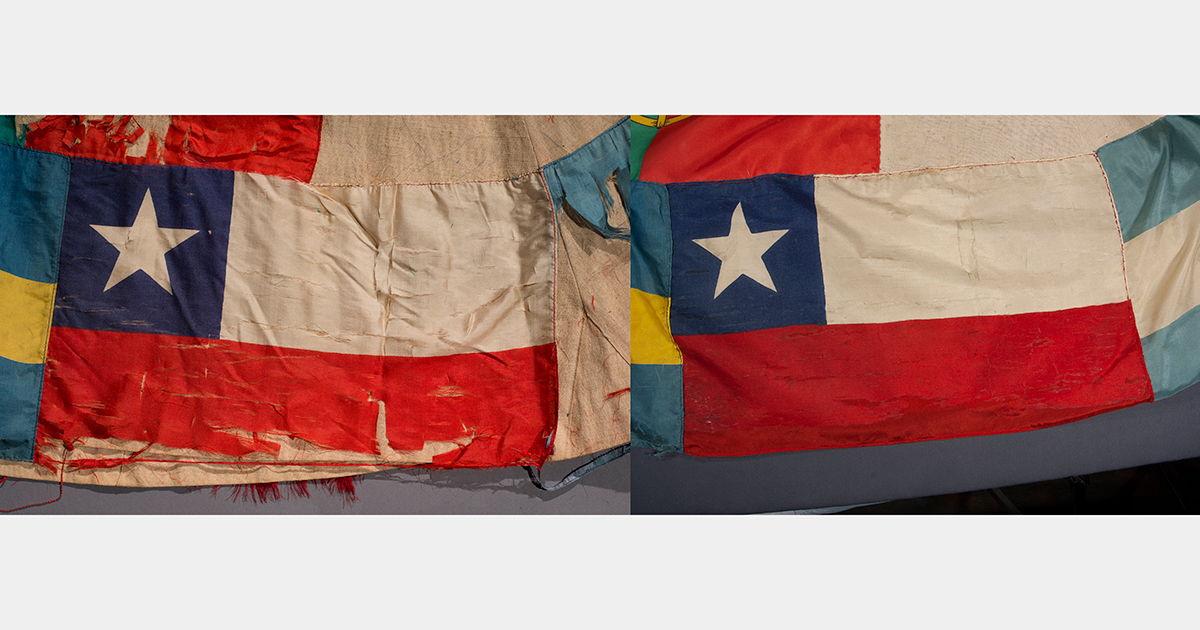
Before treatment (left) and after treatment (right) of the flag of Chile.
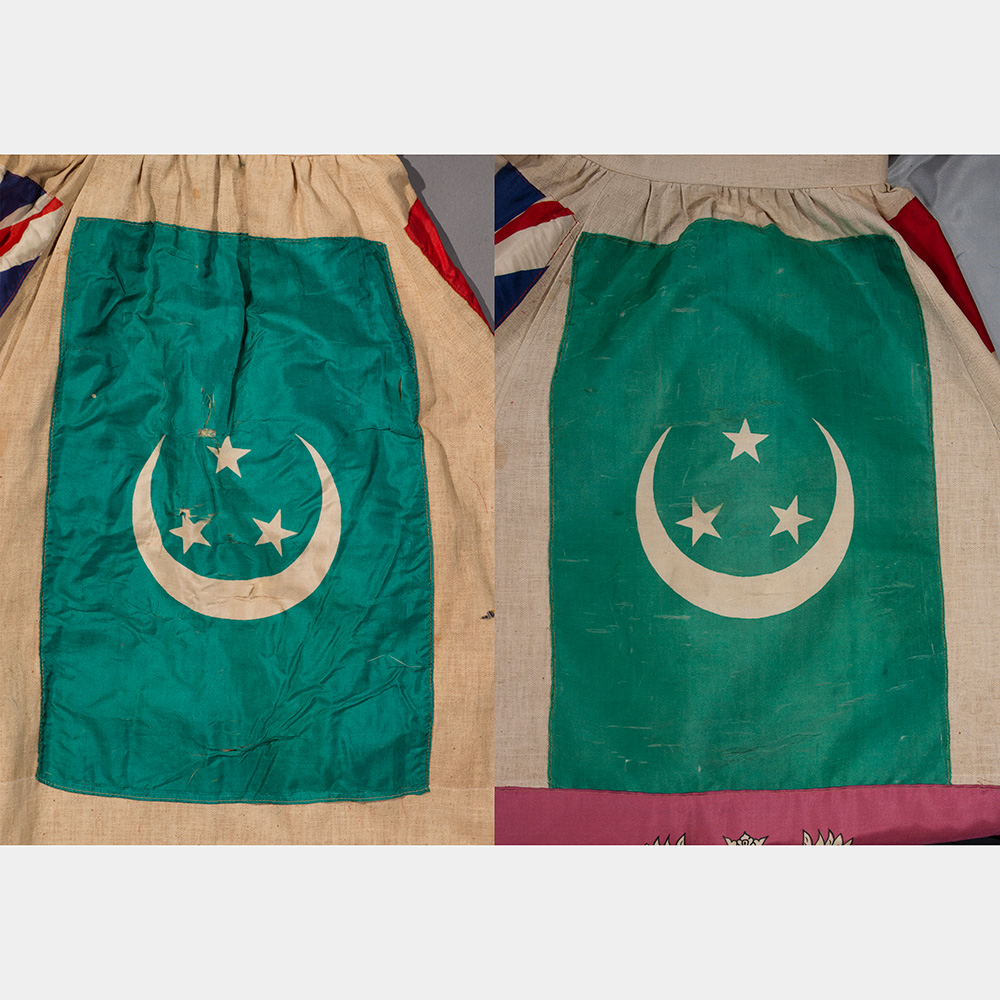
Before treatment (left) and after treatment (right) of the flag of Egypt.
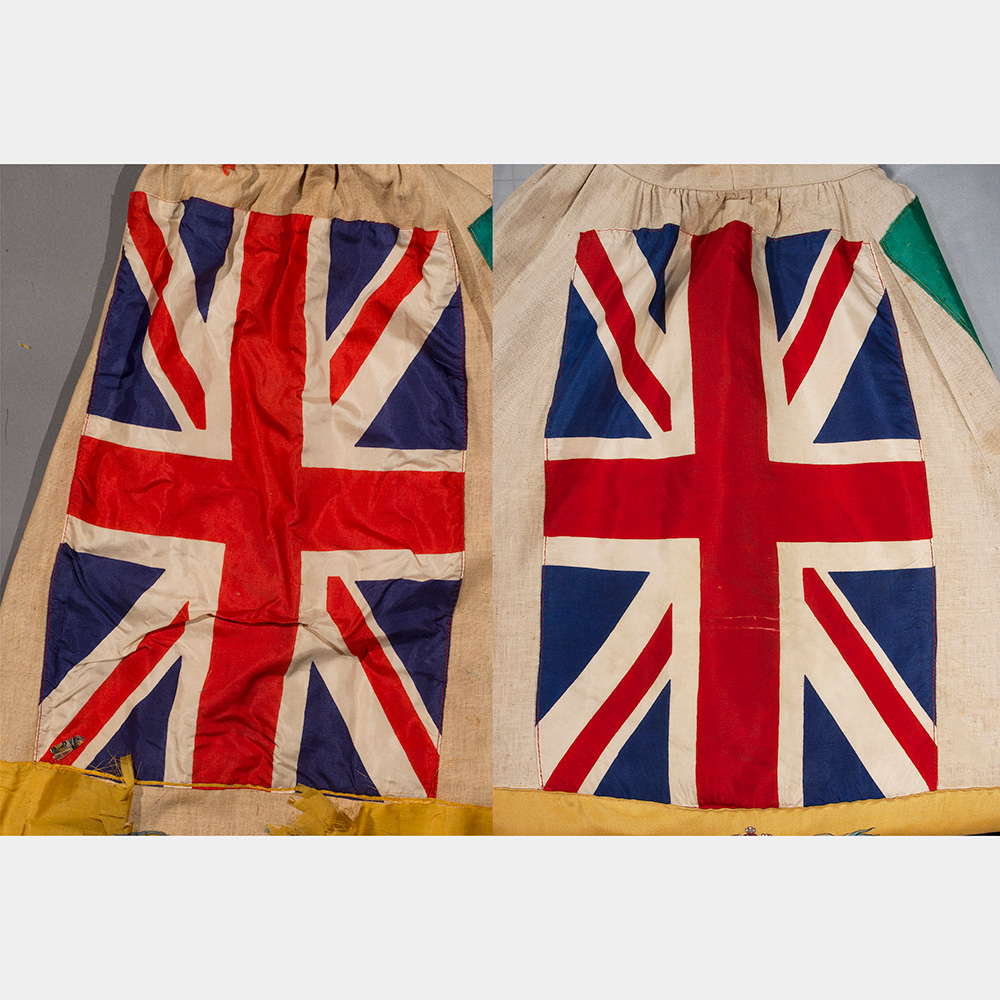
Before treatment (left) and after treatment (right) of the flag of England.
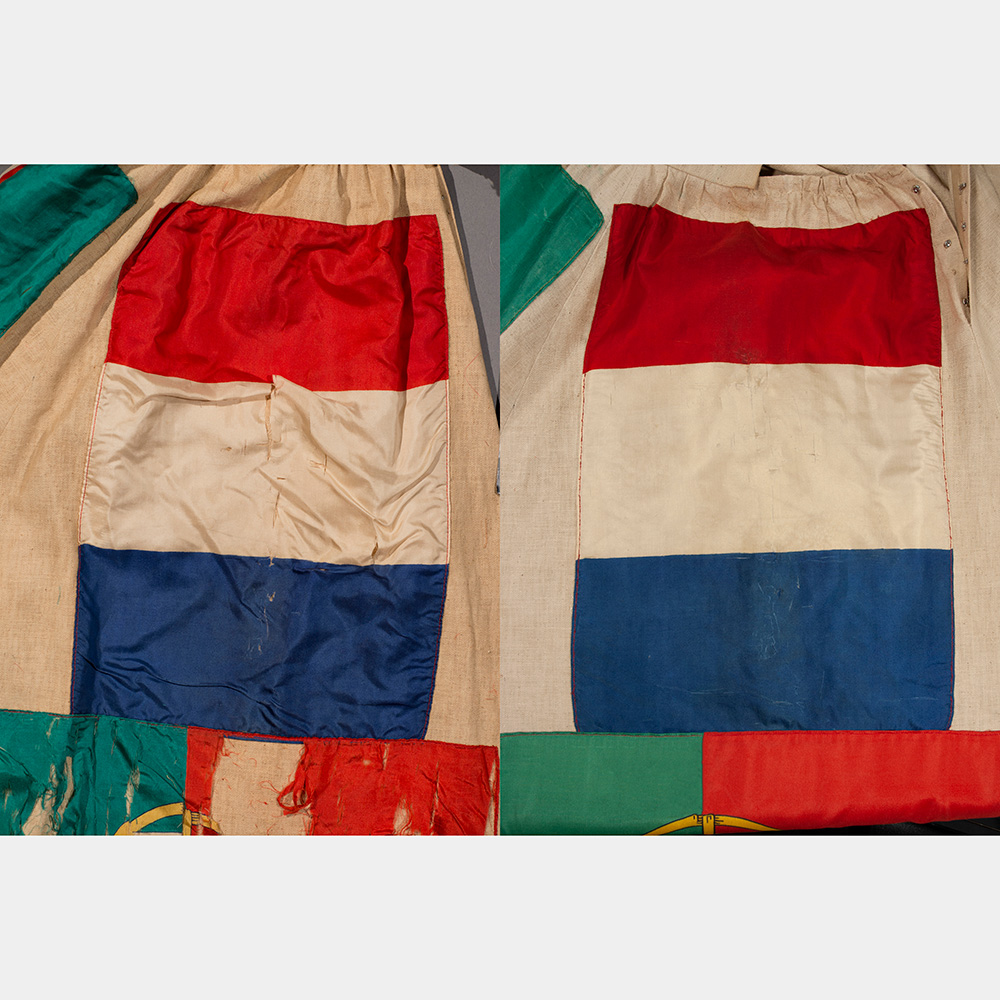
Before treatment (left) and after treatment (right) of the flag of France.
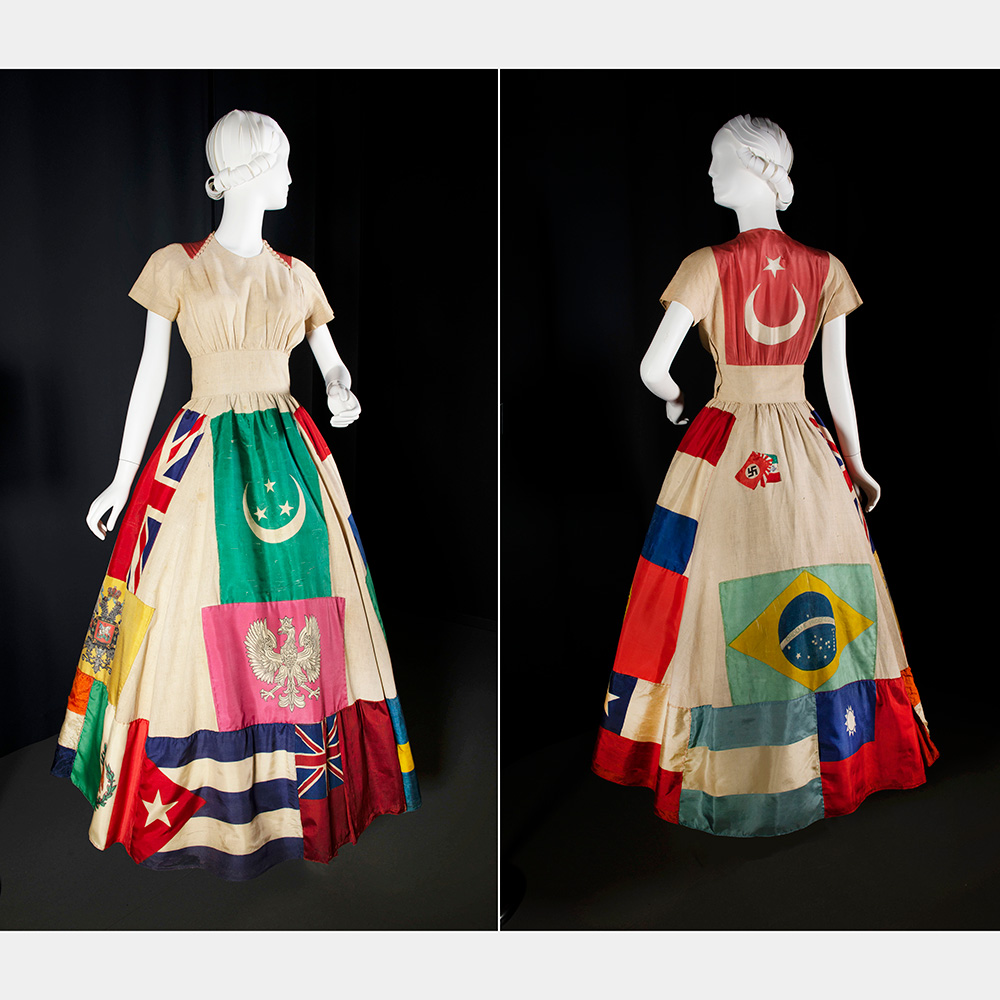
The completed dress on a mannequin, front and back views.
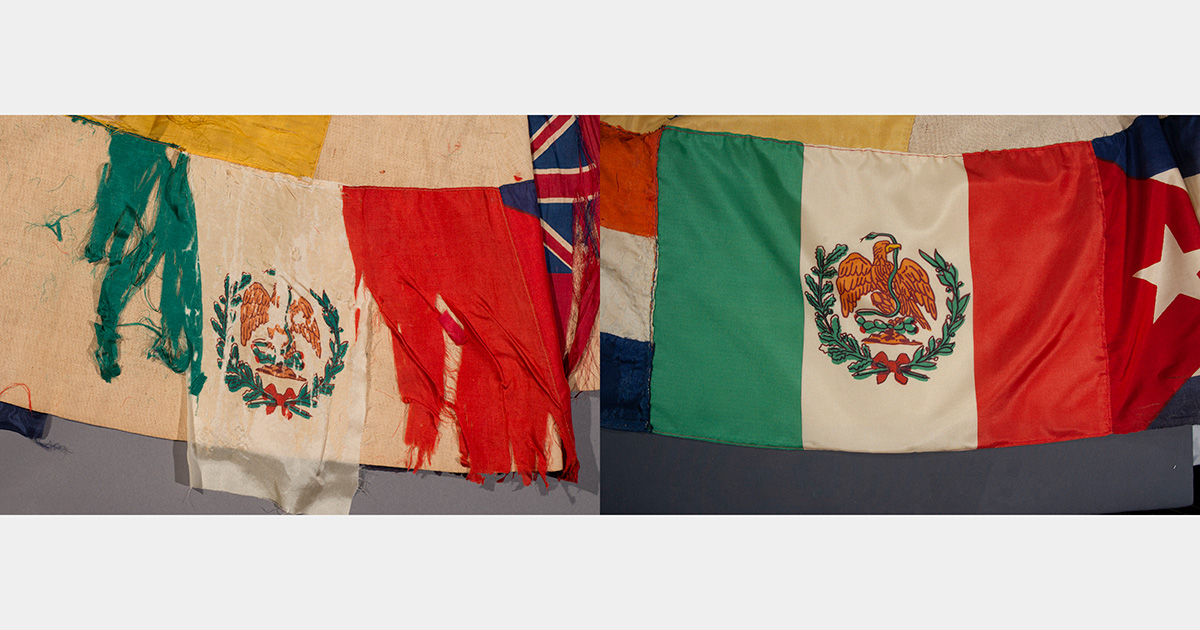
Before treatment (left) and after treatment (right) of the flag of Mexico. Treated with digitally-printed facsimile.

Before treatment (left) and after treatment (right) of the flag of Poland. Treated with digitally-printed facsimile to reproduce the design from only these fragments.
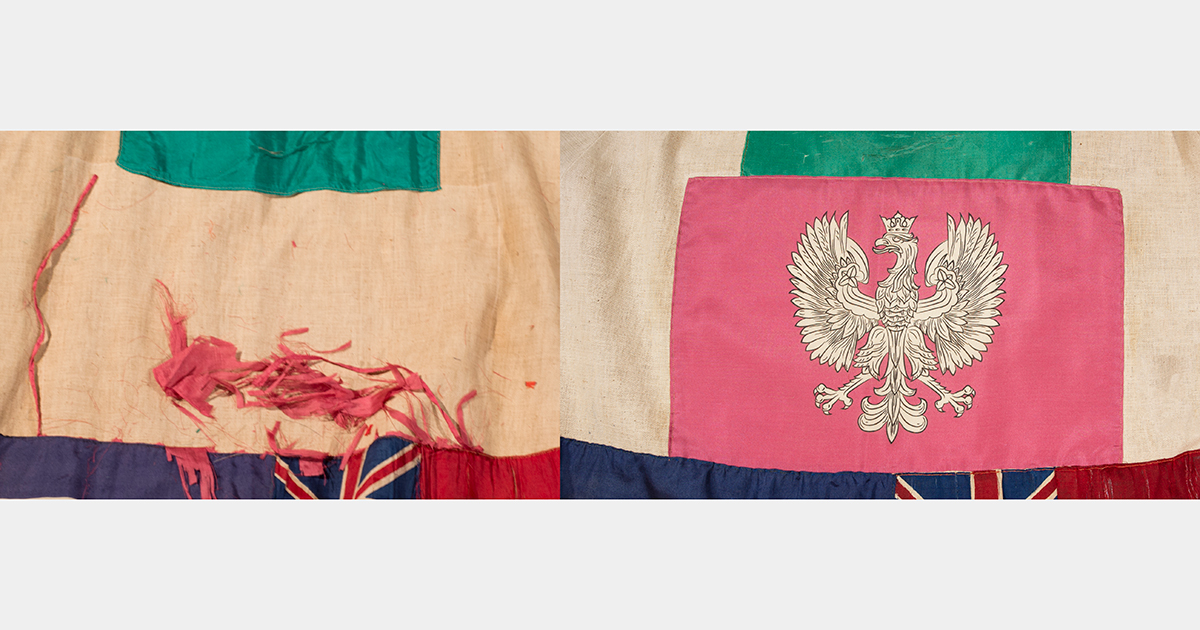
Before treatment (left) and after treatment (right) of the flag of Poland, another view. Treated with digitally-printed facsimile to fill this gap in Hawes’ design.
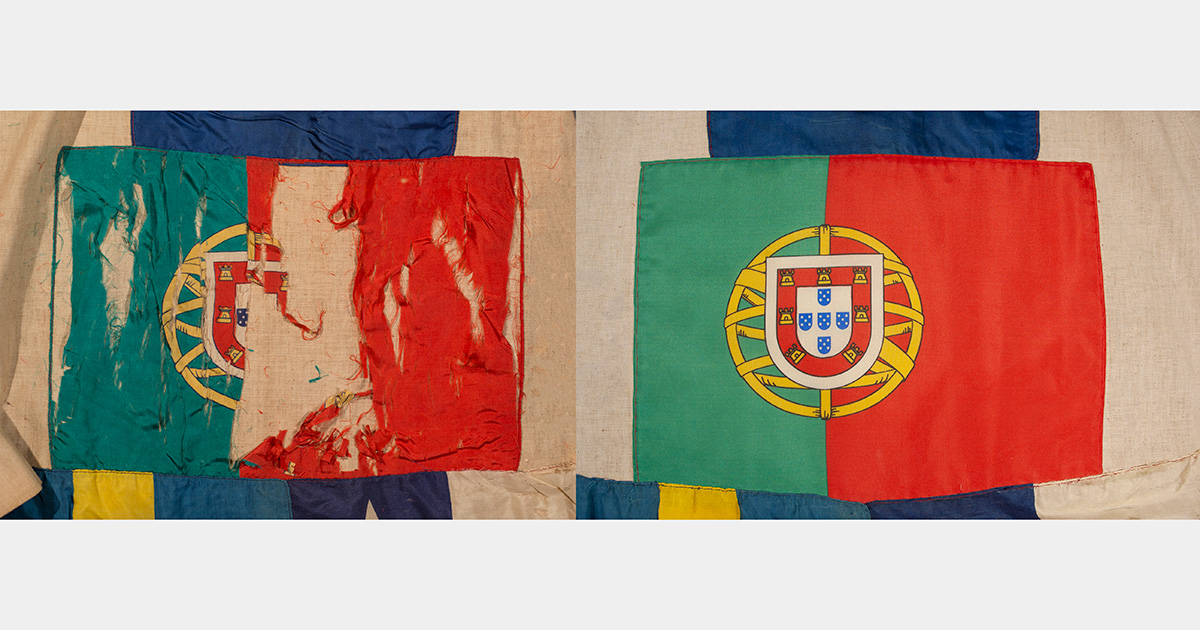
Before treatment (left) and after treatment (right) of the flag Portugal. Treated with digitally-printed facsimile.

Before treatment (left) and after treatment (right) of the flag of the British Navy (Red Ensign).
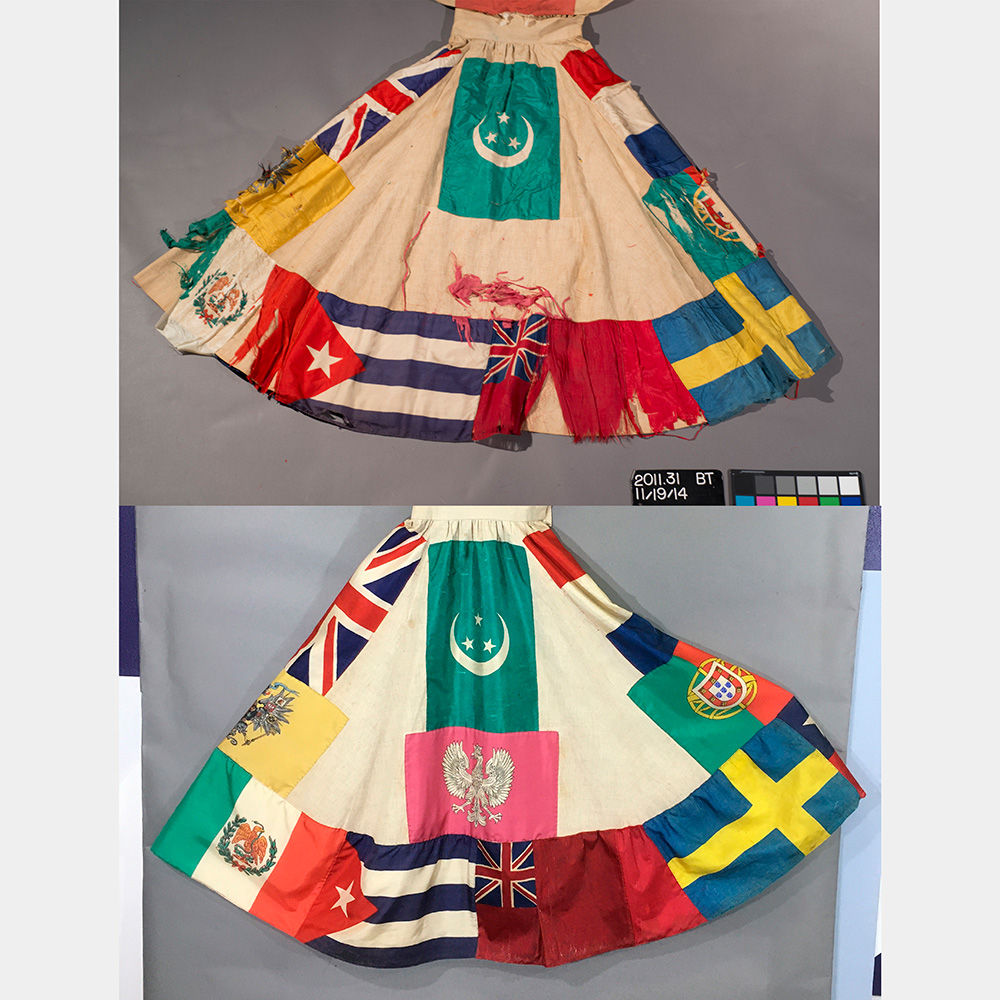
An overall picture of the front of the skirt, before treatment (top) and after treatment (bottom).
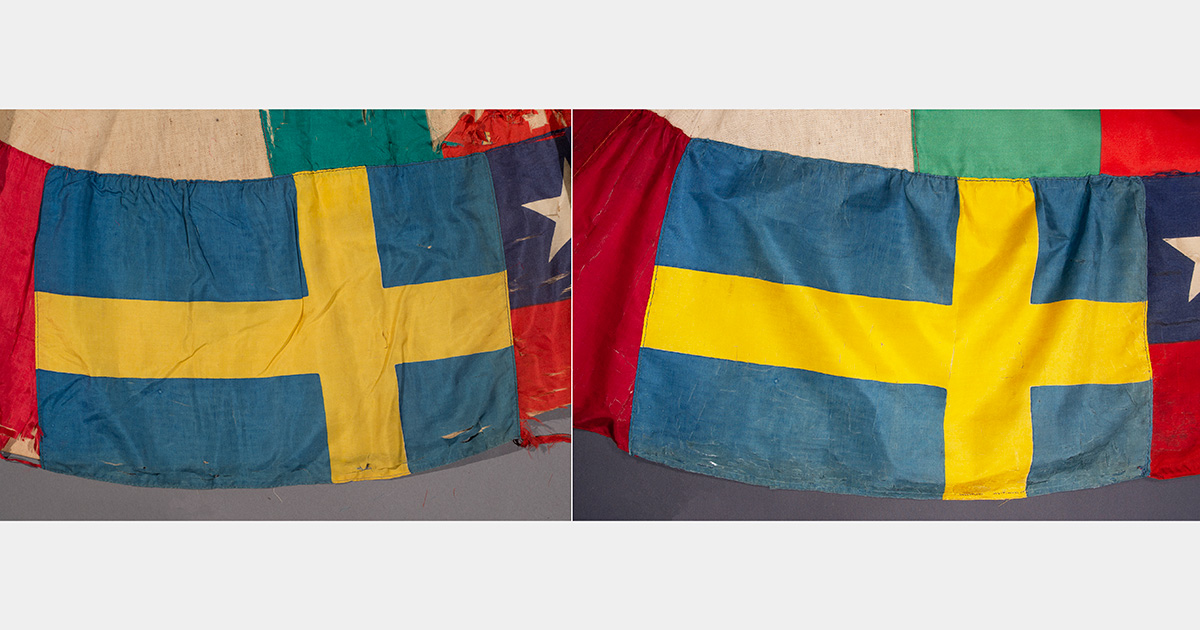
Before treatment (left) and after treatment (right) of the flag of Sweden.
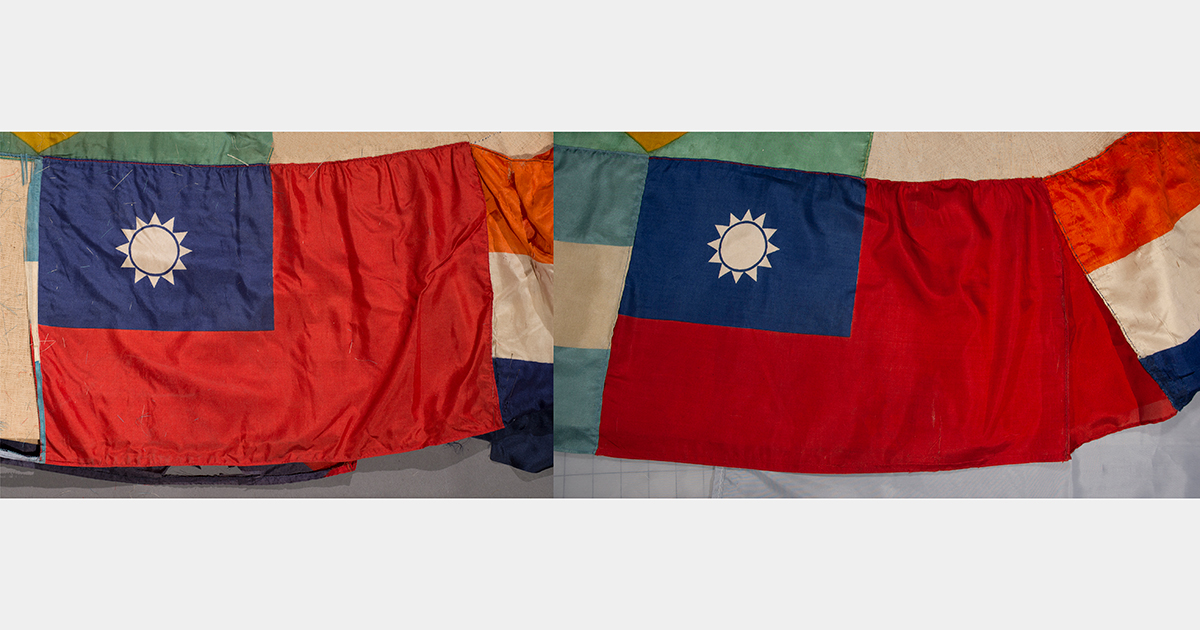
Before treatment (left) and after treatment (right) of the flag of Taiwan.

Before treatment (left) and after treatment (right) of the flag of the Union of South Africa.
Related Blog Posts

Cincinnati, OH 45202
Toll Free: 1 (877) 472-4226
Museum Hours
Museum Shop
Terrace Café
Library
Cincinnati Art Museum is supported by the tens of thousands of people who give generously to the annual ArtsWave Campaign, the region's primary source for arts funding.

Free general admission to the Cincinnati Art Museum is made possible by a gift from the Rosenthal Family Foundation. Exhibition pricing may vary. Parking at the Cincinnati Art Museum is free.
Generous support for our extended Thursday hours is provided by Art Bridges Foundation’s Access for All program.

General operating support provided by:



